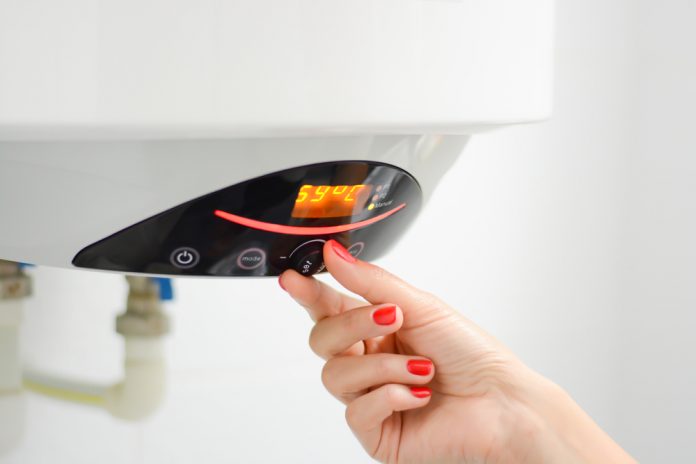Having an efficient water heater at home is no less than a blessing. What can be more soothing than a hot shower after a long day at work? Washing dishes or cleaning clothes are not hectic tasks when you have a water heater at home. While there are so many comforts linked to the water heating unit, skyrocketing utility bills may land you in “hot water.”
According to the US Department of Energy (DOE), on average water and heating bill accounts for 18% of your utility bills. The striking numbers make the hot water heater the second biggest energy expense in the household; heating and cooling units top the list. Perhaps, it’s time to learn some ways to save heat energy and slash your bill.
1. Lower the Thermostat
First things first — it is important to know the current temperature of your water heater. For this, you don’t have to call a professional. Go down in the basement or wherever your water heater is installed, and note the temperature on the thermostat.
The preset temperature for a water heater is usually between 130º – 140º Fahrenheit. However, that’s too warm for your skin. Also, if you have kids at home, they may scald themselves accidentally. Above all, it causes your energy bills to go higher.
So, the ideal solution is to lower your thermostat to 120º F — the standard temperature as recommended by DOE. The best thing is that every time you reduce the temperature of your water heater by 10 degrees, you save 3% to 5% on your water heater bill.
2. Insulate Your Water Heater Tanks and Pipes
According to the Mass Save Program, if you have a new water heater installed at your home, you can skip this step as new units are already well insulated. Old water heaters tend to lose heat with time, and this may be one of the reasons for your high energy bills.
Check the R-value of your water heater’s tank, and if it is lower than R-24, you need to install an insulation blanket. However, during the insulation process, don’t cover the thermostat of an electric tank. If your water heater is fueled by natural gas or oil, don’t cover the heater’s top, bottom, burner compartment, and thermostat.
You may also need to insulate the water pipes of your hot water heater. You have to insulate the first three feet of pipes coming out of the water heater to prevent water loss. Make sure to keep the insulation blanket six inches away from the fuel.
3. Fix the Leaky Faucet
Perhaps, the fault lies in a faucet that has been leaking for a long time. You may not have given attention to that slow leaky faucet, but you don’t know the damage it is causing. Let’s do some calculations.
Every second, one drip of water coming out of a leaky faucet costs you $1 per month. You may not find that manageable. Look at this from another viewpoint; the drip calculator from the American Water Works Association has some eye-opening facts.
In a minute, 60 drips fall from a leaky faucet — that’s 8.64 gallons of water per day. On average, leaky faucets waste 3,153 gallons of water per year. The costs double if the leak source is a hot water tap; you also pay for the energy consumed by heating the water.
4. Set a Timer on Your Hot Water Heater
A way to save heat energy and slash your energy bill is to install a voltmeter on your water heater. Those who have tankless water heaters are not required to follow this step; these units heat water only when needed.
Tank water heaters don’t take a break. They keep your tank full of hot water at a specified temperature throughout the day. That’s a lot of energy and money wasted, as you don’t need hot water when you are asleep or at work.
So, if you have a conventional tank storage water heater, consider installing a voltmeter/timer. According to your work schedule and overnight, you can program the heater to turn off. Also, you can turn your electric water heater off during busy hours.
5. Buy Energy-Efficient Appliances
Perhaps, you have already taken the above-mentioned steps, but you don’t see any difference in your water heater bill. The average life span of a water heater is 15 years; if your heater has reached that mark, it’s high time that you replace your water heater.
Tankless hot water heaters are energy-efficient and high-performance models. Your new water heater cost may be a little higher, but they have low operational costs. Also, you can enjoy an endless supply of hot water on demand and save up to 40% on your energy bill.
Final Thoughts
Be vigilant. Keep your water heater at a low temperature. If you have old water heaters, consider installing insulation blankets. However, if it is 15 years old now, contact a contract finder and get a new efficient water heater for your home. Besides all these steps, tweak your water usage habits, as well. Wash your clothes with cold water, reduce your shower time, and run the dishwasher only when it is full.
Find a Home-Based Business to Start-Up >>> Hundreds of Business Listings.
















































